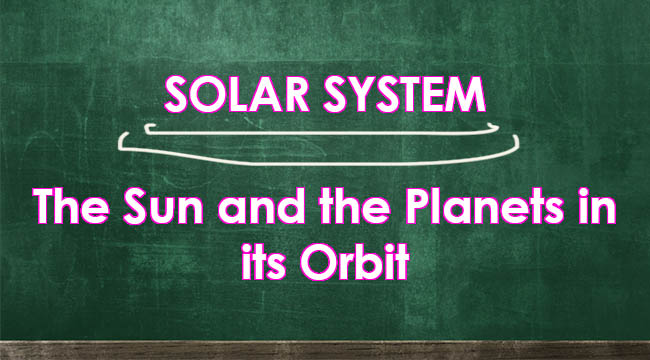SOLAR SYSTEM – The Star And The Surrounding Planets
SOLAR SYSTEM – In this topic, we will discuss the planetary system that is composed of the sun and the orbiting planets: the solar system.
The solar system is a planetary system in the Milky Way galaxy which is composed of one central star, known as the Sun, and planets that orbit around it.

The Sun
The sun is the very center of the Solar System and one of the main sources of heat and light. It is a yellow dwarf star and its gravity is what holds the system together.
The Planets
- Mercury – The fastest planet nearest to the sun. According to National Geographic, it is named after the Roman messenger god Mercury. As the fastest planet, it orbits around the Sun in 88 Earth days.
- Venus – The second closest planet to the sun. Venus is twin sister of Earth as they roughly have the same diameter. The planet is well known for its extremely hot temperature.
- Earth – Our home planet. Earth is the only known planet to be filled with life.
- Mars – Also known as the Red Planet, as per the article, Mars’ surface has been changed by volcanism, impacts from other bodies, movements of its crust, and atmospheric effects such as dust storms.
- Jupiter – The biggest planet of the Solar System and a massive ball of gas. Jupiter has four moons: Io, Europa, Ganymede, and Callisto.
- Saturn – The second largest planet and the only planet to have a ring. Saturn is made of hydrogen and helium and its ring is made of mostly water and ice.
- Uranus – The seventh planet of the System. It is reported that the planet can rain diamonds.
- Neptune – The windiest planet and the farthest planet next to Uranus. It is the other of the two ice giants in the System.
- Pluto, Eris, and Ceres – The discovered dwarf planets of the Solar System. Pluto has three moons: Hydra, Nix, and Charon.
